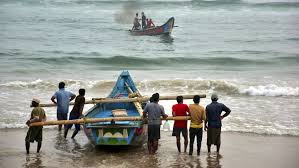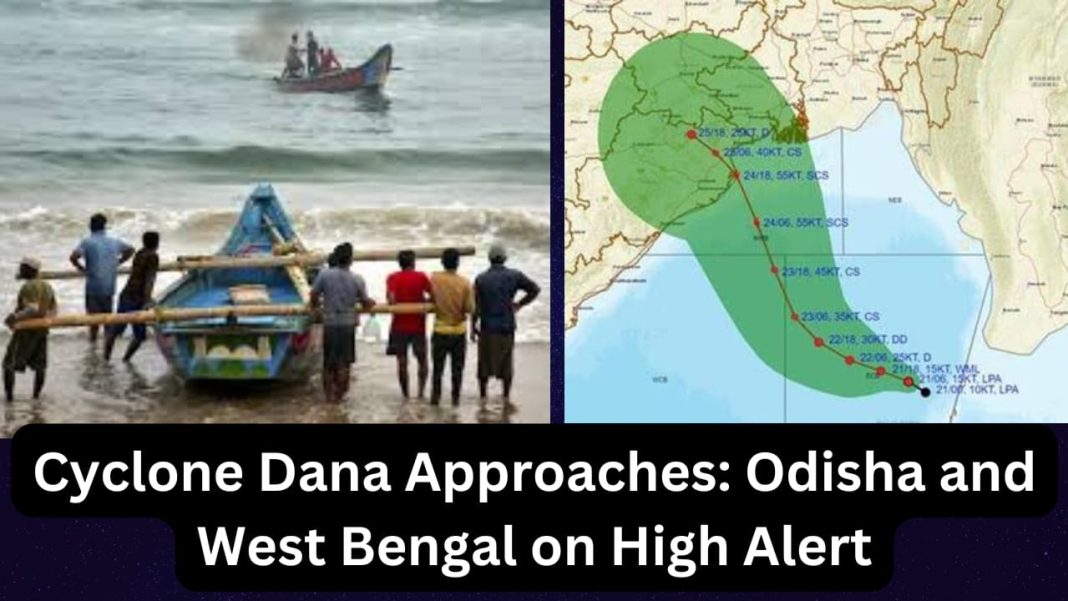Digital News Desk:
As Cyclone Dana approaches the eastern coast of India, authorities have issued high alerts across Odisha and West Bengal, with widespread preparations underway to mitigate the storm’s potentially devastating impact. Classified as a severe cyclonic storm, Cyclone Dana is expected to make landfall in the coming days, with winds predicted to reach over 120 km/h, accompanied by heavy rainfall and storm surges.
Schools Closed and Precautions Taken
In anticipation of the storm, the Odisha government has ordered the closure of schools in 14 districts from October 23 to 25, including Ganjam, Puri, Jagatsinghpur, Kendrapara, Bhadrak, and Balasore. Schools in these areas will remain shut as a precautionary measure to protect students and staff. Similar measures are being considered in West Bengal, where the coastal districts are also under high alert.
The India Meteorological Department (IMD) has warned that Cyclone Dana will intensify as it moves over the Bay of Bengal. The storm is expected to cause heavy to very heavy rainfall in the affected areas, particularly in the coastal districts. Fishermen have been advised not to venture into the sea, and those already at sea have been urged to return to the coast immediately.

Disaster Management and Evacuation Plans
Both Odisha and West Bengal are known for their disaster preparedness, having faced several cyclones in the past decade. The state’s disaster management authorities have been put on high alert, and evacuation plans are being implemented to move people from vulnerable areas to safer locations. In Odisha, over 300 cyclone shelters have been activated, with additional shelters being set up in areas prone to flooding. West Bengal has similarly prepared shelters along its coastline, ensuring that food, water, and medical supplies are stocked for those in need.
The National Disaster Response Force (NDRF) has been deployed in both states to assist with evacuation efforts, monitor flood-prone areas, and manage rescue operations if needed. Over 20 teams have been pre-positioned in the most vulnerable regions to ensure swift response times.
Expected Impact and Concerns
The primary concerns with Cyclone Dana include potential damage to infrastructure, crops, and homes. Odisha, a major agricultural state, is particularly worried about the impact on its rice and vegetable crops, which are currently in a crucial growth phase. The cyclone’s arrival could lead to severe losses, especially in low-lying areas where waterlogging could destroy vast swathes of farmland.
Another significant concern is the potential for flash floods and landslides, particularly in areas with poor drainage systems. Coastal districts are on high alert for storm surges, which could flood communities and disrupt road and rail connectivity. The state governments have also warned about the risk of electricity outages, water supply disruptions, and transportation delays as the storm progresses inland.
The Odisha government has urged people to stay indoors and stock up on essentials. Officials are also ensuring that power companies and emergency services are ready to respond to any outages or infrastructure damage caused by the storm.

Comparisons to Past Cyclones
Cyclone Dana is not the first major cyclone to hit the region. In recent years, Odisha and West Bengal have experienced multiple severe cyclonic storms, including Cyclone Fani in 2019 and Cyclone Yaas in 2021. These past experiences have helped the states improve their disaster preparedness and response mechanisms. The damage caused by these earlier storms, which led to widespread power outages, flooding, and loss of life, has prompted both governments to take early action this time.
However, while Cyclone Fani and Yaas were highly destructive, the IMD suggests that Cyclone Dana may not reach the same intensity, though it still poses a serious threat. The cyclone’s trajectory and strength will depend on several factors, including wind speeds and sea surface temperatures. Meteorologists are closely monitoring the storm’s development, providing regular updates to local governments and the public.
Public Awareness and Safety Measures
Public awareness campaigns are already underway in both states, with local authorities using social media, radio, and television to inform people about safety measures. Citizens have been encouraged to follow guidelines issued by disaster management agencies, including staying indoors, securing homes, and preparing emergency kits with food, water, and medical supplies.
Many have been asked to relocate to government-designated shelters ahead of the cyclone’s landfall. Essential services like hospitals, fire departments, and police are on standby, ready to respond to emergencies. Coastal communities, especially fishermen, have been among the primary targets of these awareness efforts, given their vulnerability to the cyclone’s impact.
You May Also Read: PM Modi at BRICS Summit 2024 in Russia: A Strategic Push for Multilateralism and Global Reform








